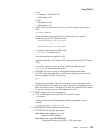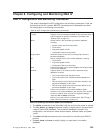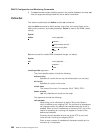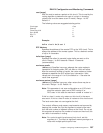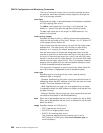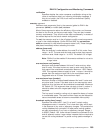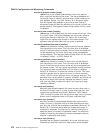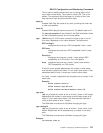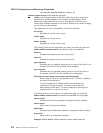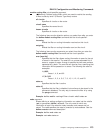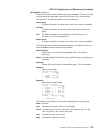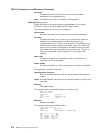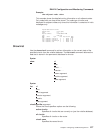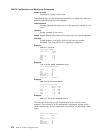This is used to detect packets which are in routing loops, which
occur when routes decay. The maximum visits is 63. This is the
default. This argument should be larger, by a factor of two, than
both maximum hops and area maximum hops.
state on
Enables DNA. May be issued at any time, providing the router has
a valid node address.
state off
Disables DNA. May be issued at any time. The default state is off.
For set, set executor will be inhibited if the DNA initialization failed
for lack of available memory for the routing tables.
type (define only) On X.25 circuits, causes the router to act in one of
four ways, depending on the value selected. The options are:
DEC-routing-iv
configures the router as a DEC-compatible Level 1 router.
DEC-area
configures the router as a DEC-compatible Level 2 (area)
router.
Routing-iv
configures the router as a Level 1 router without DEC
compatibility on X.25 circuits. This is the default.
Area configures the router as a Level 2 (area) router without
DEC compatibility on X.25 circuits.
A Level 2 router accepts adjacencies with routers in other areas,
and maintains routes to all areas. If it can reach other areas, it also
advertises itself to Level 1 routers as a route to other areas.
For Level 1 routers, adjacencies are accepted only to routers in the
same area.
Example:
define executor state on
define executor type DEC-area
define executor maximum broadcast routers 10
type area
(set only) Causes the router to act as a level 2 router. It will accept
adjacencies with routers in other areas, and will keep routes to all
areas. If it can reach other areas, it will also advertise itself as a
route to other areas to level 1 routers.
The DNA state must be set to
off
before changing the
type
.
type routing-IV
(set only) Causes the router to act as a level 1 router, which is the
default. Adjacencies will be accepted only to routers in the same
area.
The DNA state must be set to
off
before changing the
type
.
Example:
set executor state on
DNA IV Configuration and Monitoring Commands
Chapter 8. Configuring and Monitoring DNA IV 271



